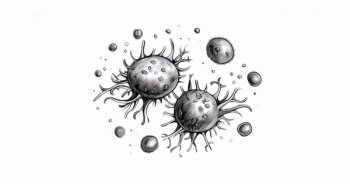
Therapy Options for Steroid-Refractory Chronic GVHD
Experts in the treatment of graft versus host disease evaluate second-line agents for patients with steroid-refractory disease.
Episodes in this series

Transcript:
Yi-Bin Chen, MD: This was the list of steroid-refractory chronic GVHD [graft-versus-host disease] therapies. The ones in bold are the ones that are currently FDA-approved, you know, with different subtleties to each of them. And the ones not bolded are ones we’ve used throughout the years with mixed success, but, you know, many of them have caused unacceptable immunosuppression or other issues and many just have not worked as well for patients at large. I guess I’ll start by saying, if this patient was at Mass General [Hospital] and we’re adding a second-line agent, we would next use ruxolitinib [Jakafi] in a dose of 10 mg BID, or twice a day, as not only as a way to improve response but also, as Corey suggested, this is still a big dose of steroids. So we do want a steroid spared to a certain extent. Would anybody use a different agent at this point? Or add onto what I just said for rationale for using ruxolitinib? I think we’d all…
Corey S. Cutler, MD, MPH, FRCPC: We would probably do the same.
Catherine J. Lee, MD, MS: I agree.
Yi-Bin Chen, MD: [CROSSTALK] If this patient was steroid-refractory or intolerant, meaning, you know, was having toxicities of steroids, would there be a reason to use a different therapy? I think I’d probably still use ruxolitinib as well. I don’t know if anybody else differs in that opinion.
Corey S. Cutler, MD, MPH, FRCPC: I would take a look at what side effects the patient was currently experiencing and try to tailor therapy to avoid aggravating those things. You mentioned that he had normal blood counts, so that puts ruxolitinib in a favorable position in the second line. So that’s how we would do it. And again, clinical trial would be certainly an acceptable answer to the question right now.
Yi-Bin Chen, MD: No, and I think if any of us had a clinical trial for first-line therapy, that would’ve been great as well, especially one as we talked about to try and spare steroids. But absolutely. You know, I think, as Corey brings up, the counts are the biggest issue that would drive us, all of us I think, to consider a different agent rather than ruxolitinib. But here, where the counts are normal, I think most of us are used to recommending ruxolitinib at this juncture.
Transcript edited for clarity.













































